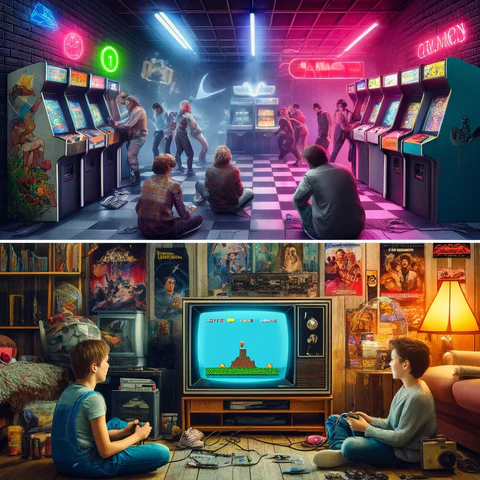From Arcades to Art: How Video Games Became a Global Cultural Phenomenon
Video games have come a long way since their humble beginnings. Once tucked away in smoky arcades or limited to family living rooms, they are now recognized as a major force in global culture. From shaping fashion and music to being featured in museums and academic journals, games have transcended their status as mere entertainment.
So, how did we get here—and what does it say about the role games play in society today?
Gaming as a Mirror of Culture
Every generation leaves its mark on the games it creates. The cold war era gave us alien invasions and spy thrillers. The 90s delivered gritty antiheroes and rebellious themes, echoing the angst of a changing world. Today’s games often reflect issues like mental health, environmentalism, and social justice.
In short, games don’t just entertain—they comment. Titles like The Last of Us, Papers, Please, or Celeste are more than challenges; they’re artistic explorations of what it means to be human.
Language, Identity, and Representation
One of the most powerful cultural shifts in gaming has been the push for better representation. As player demographics have diversified, so have the characters and stories. No longer are games limited to Western male protagonists saving the world.
Now, we see indie developers crafting narratives around underrepresented communities, and large studios including diverse voices in their teams. This evolution helps ensure that gaming is not just global in reach, but also in perspective.
Interestingly, this inclusiveness has also extended to game mechanics and genres. Some platforms blur traditional boundaries altogether—mixing casino-style elements with casual play, as seen in sites like jackpot108 that appeal to hybrid audiences with varied play styles.
Gaming and the Arts
It might surprise some to learn that video games have earned their place in the world of fine art. Institutions like the Museum of Modern Art in New York and the Victoria and Albert Museum in London have featured games in exhibitions—not just as tech artifacts, but as art objects.
Soundtracks from games are performed by orchestras. Digital sculptures from games are printed and displayed in galleries. Mods and fan creations thrive on platforms like Reddit and YouTube, showing just how interactive and participatory this medium has become.
Cultural Cross-Pollination
Gaming isn’t just shaped by culture—it also shapes it. Games influence fashion (see the popularity of streetwear collaborations with gaming franchises), film (video game adaptations are booming), and language (how many people use “GG,” “noob,” or “nerf” in daily conversation?).
In some countries, gaming is more than recreation—it’s part of national identity. South Korea’s esports scene is a billion-dollar industry. Japan’s gaming history is a source of pride and nostalgia. Even in rural parts of Africa, mobile gaming has created new opportunities for connection and creativity.
Conclusion
To dismiss video games as child’s play is to ignore one of the most dynamic cultural movements of our time. Games are art, commentary, conversation, and identity—all rendered in code and interaction.
As global gaming continues to evolve, platforms like jackpot108 and others that blend innovation with accessibility are helping shape the future of how we play, connect, and express ourselves.
Culture doesn’t just influence games—games are culture.

